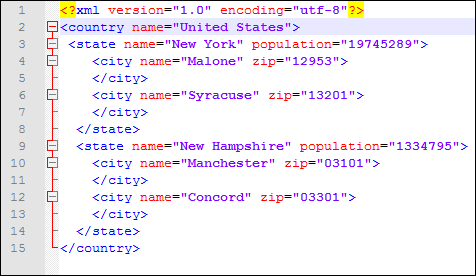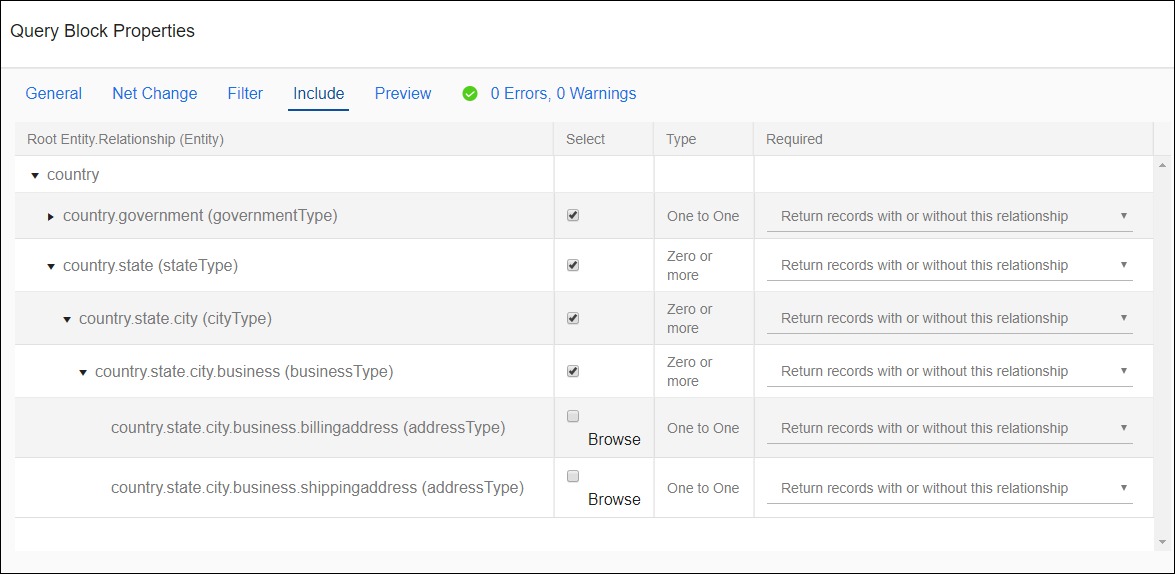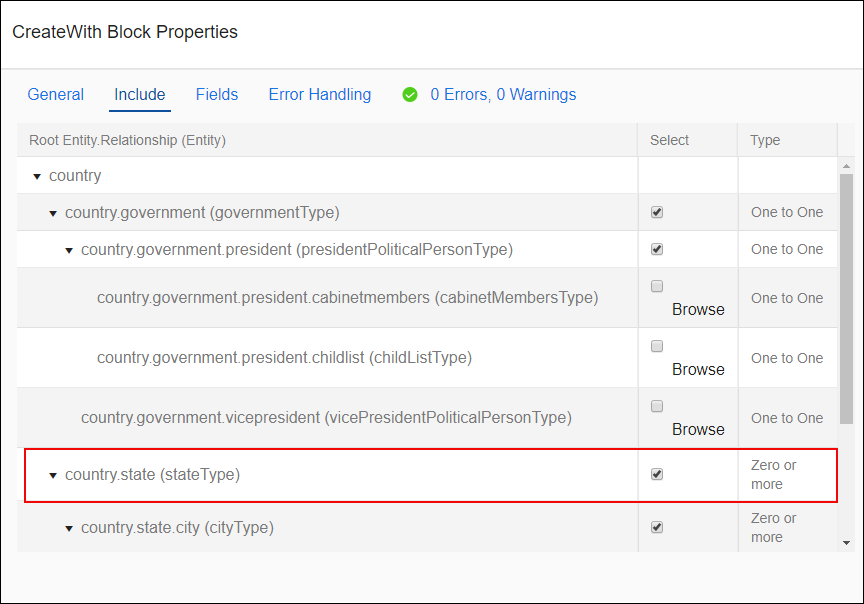Hierarchical Data
Many datastores and file types use hierarchical datasets, such as XML or JSON, which contain multiple levels of data within a single datastore. For example, a single file can represent a record which has a hierarchy of Country, State, and City or parent, child, grandchild.
The hierarchy can extend down multiple levels, for example, a record containing a Country or parent, States or children, and Cities within each State or grandchildren.
A single hierarchy can contain both one-to-one relationships and one-to-many relations, for example, a record containing a Country, a President and a Vice-President, States , Cities within each State, and businesses within each City. The relationship between Country and President or Country and Vice President is a one-to-one relationship. The relationship between Country and States is a one-to-many relationship.
Including Related Data
The visual representation of these relationships and the method for including related data are handled by the Include tab on the operation blocks in an Integration Flow. On a Query or a Fetch block, the Include tab shows you the shape of the Source data hierarchically and lets you select the data to be gathered.
On a hierarchical target operation Block, such as CreateWith, the Include tab shows you the shape of the data as it will be written to the target. If the target datastore and associated Connector do not support hierarchical data, CreateWith cannot be used.




